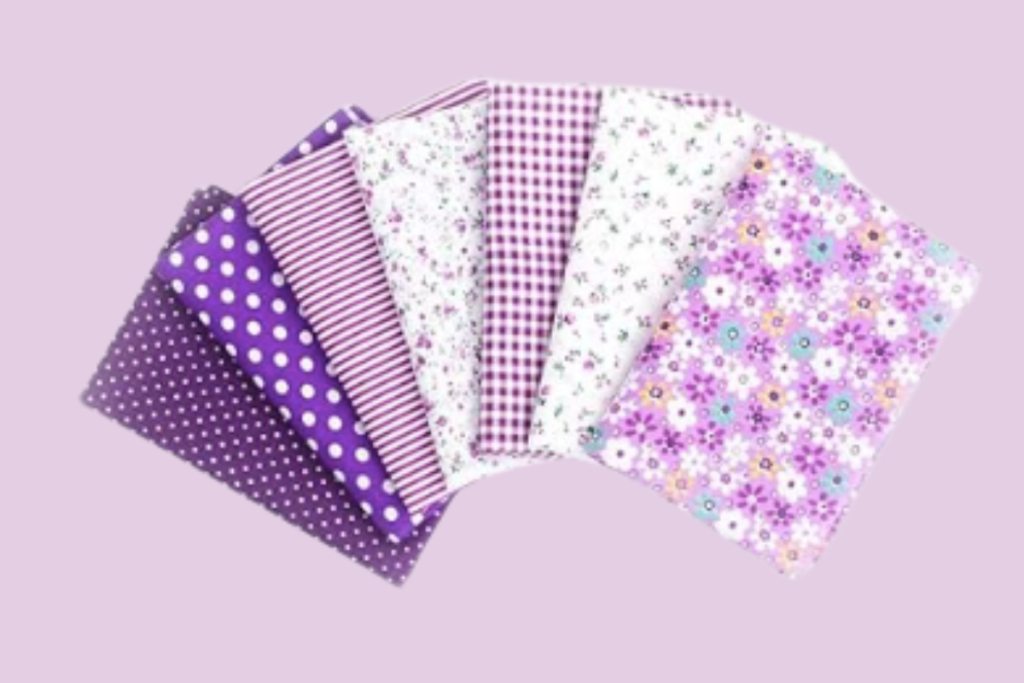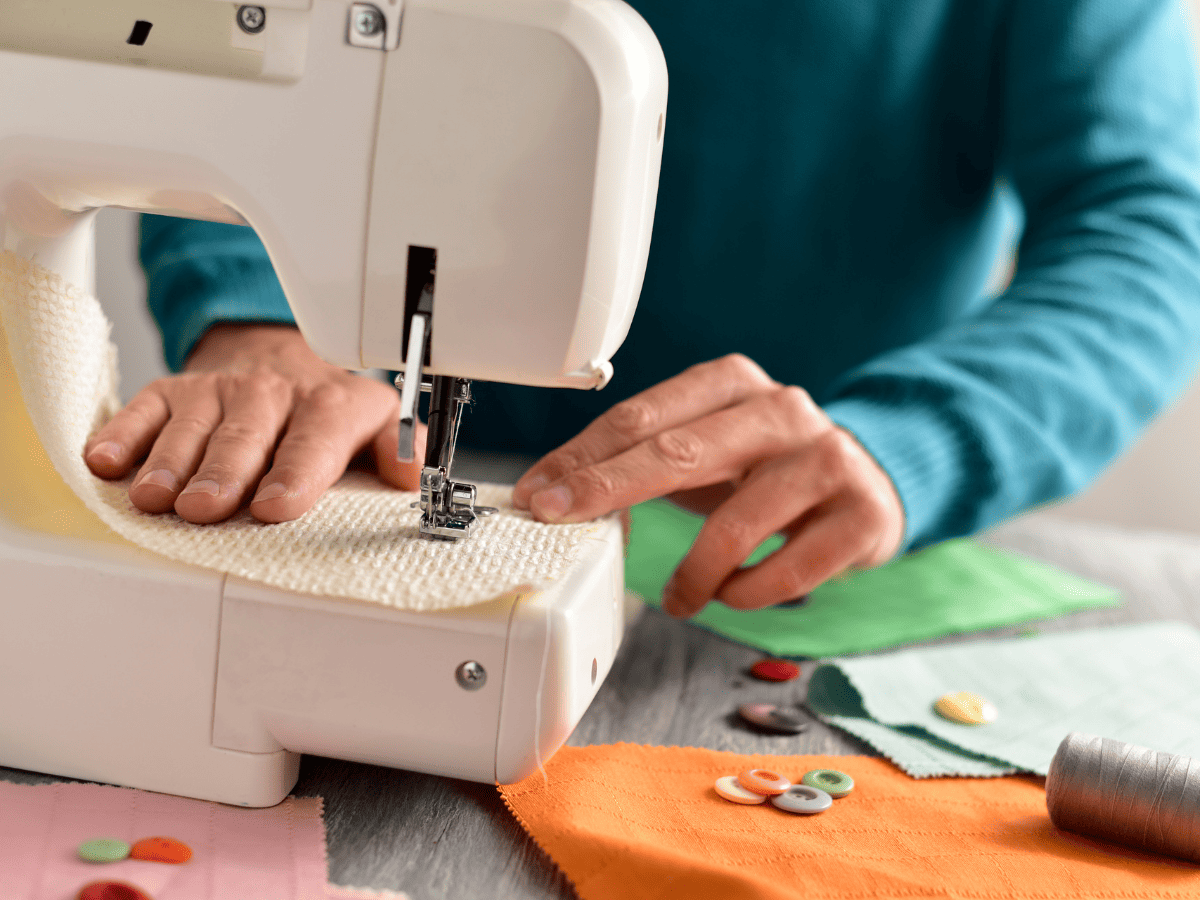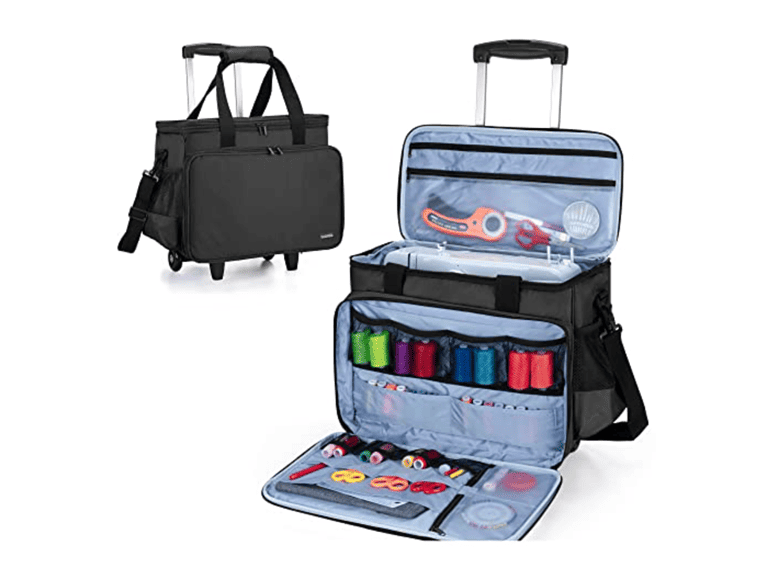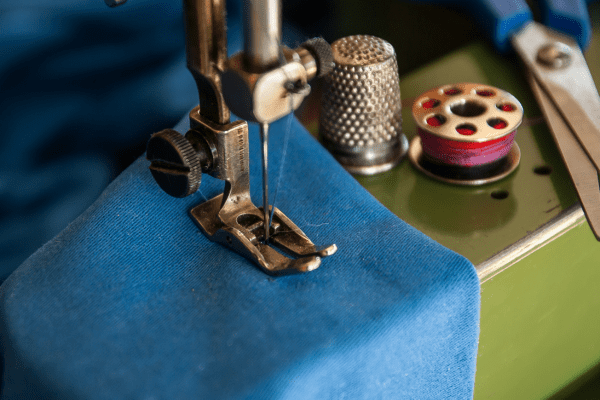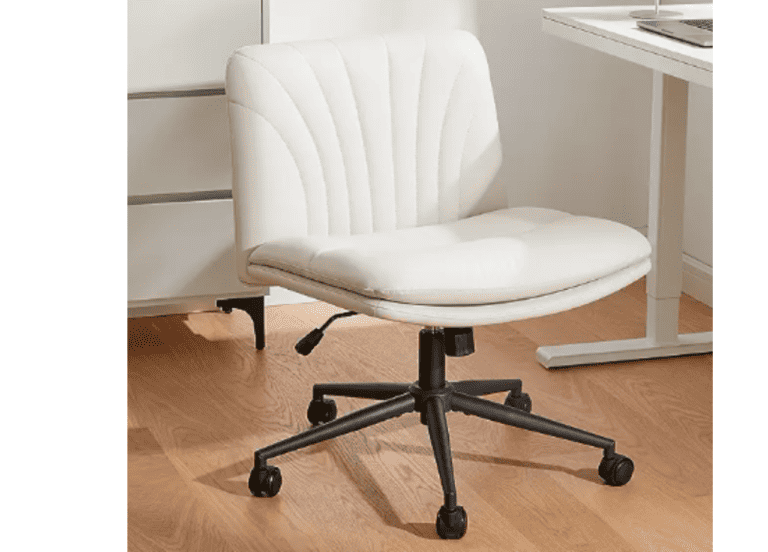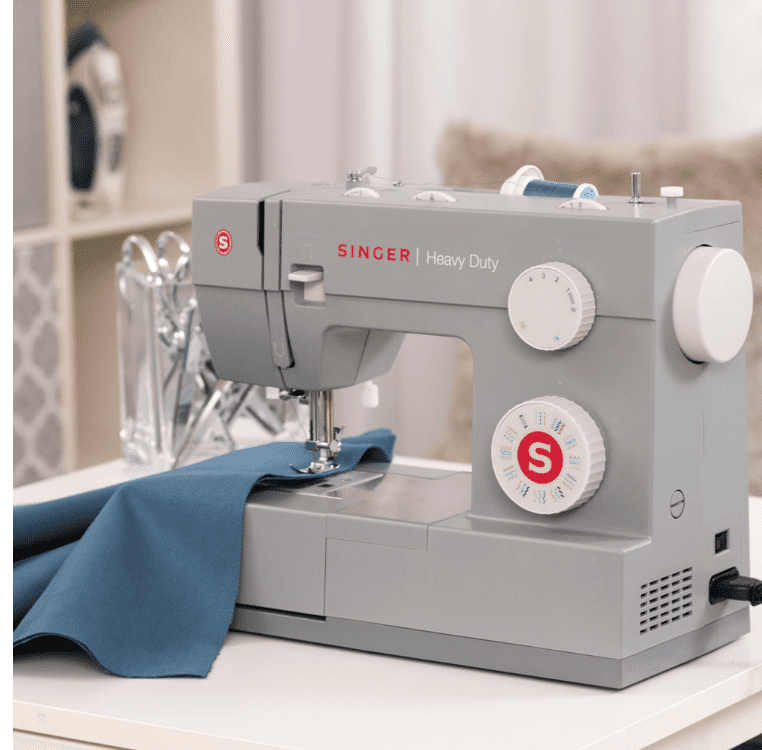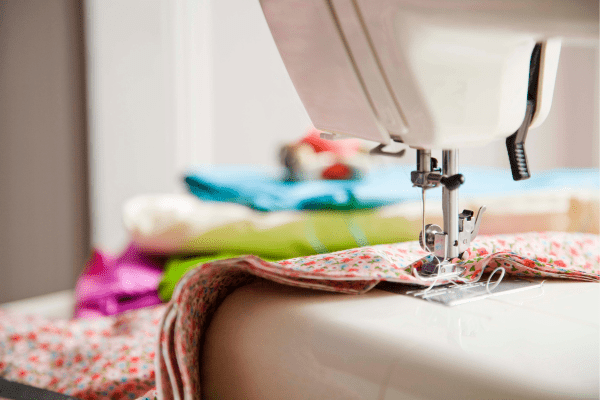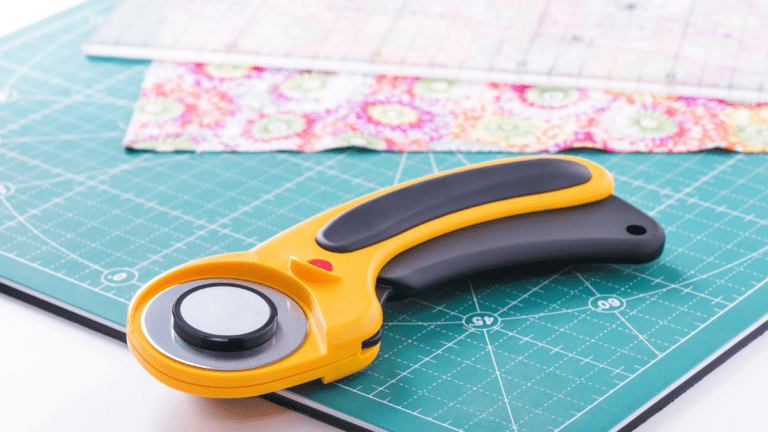Best Oil for Sewing Machine: 4 Excellent Choices
Is your sewing machine producing an unusual noise? It might be a sign that it requires lubrication. While not all sewing machines need oiling, many do in order to maintain their functionality and prevent damage. As a sewer it’s important to know the best oil for sewing machine.
However, it’s also important to use the appropriate type of oil to avoid potential issues.
Are you wondering if your sewing machine needs oiling? Additionally, do you want to learn about the distinctions between various sewing machine oils and how to select the best one for your modern or vintage model?
In this comprehensive guide, I will provide you with all the information you need to know about using sewing machine oil effectively.
Let’s start with a little history dating back to the 1800’s. Even Mr Singer said their Singer sewing machines needed the best oil for sewing machine.
Sewing machines are intricate devices with tons of metal parts that require proper care to ensure their long-term functionality.
This care encompasses routine maintenance tasks like cleaning, replacing worn-out parts, and, crucially, providing adequate lubrication to the gears using sewing machine oil.
The frequency of oiling depends on your machine’s usage, typically occurring every few months.
It’s paramount to recognize the significance of properly maintaining your investment—a well-cared-for sewing machine operates smoothly and endures far longer than one neglected over time.
In the past, sewing machines were often accompanied by an oil can inside the packaging. I still recall those vintage tin oil cans that dispensed a drop of oil when the bottom was pressed. While I haven’t personally used one myself, I have witnessed their existence.
Over the past 150 years, significant advancements have taken place, prompting the question of whether oiling sewing machines is still necessary today.
Oil and fabric are not compatible, as oil stains can be challenging to remove and may even damage certain fabric types since oil is derived from petroleum. However, if oiling is required, what type of oil should be used?
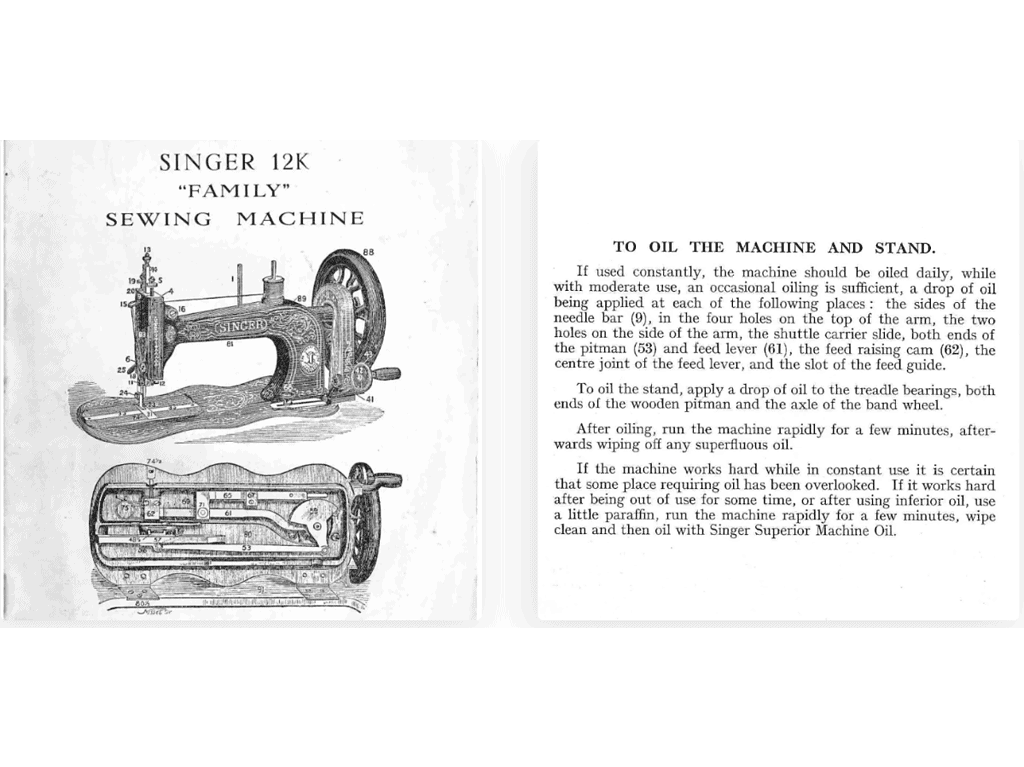
As demonstrated above, Singer recommended the use of specialized oil even 150 years ago.
Table of Contents
Do all Sewing Machines Need Oiled?
Let’s clarify the focus of our discussion: we are specifically referring to home sewing machines. Industrial sewing machines, which are frequently operated for extended periods, fall into a distinct category. It’s worth noting that a home sewing machine, if used in the same manner as an industrial one, would likely not endure its warranty period.
In essence, any sewing machine (or any mechanical device) that involves moving metal parts in contact with other metal parts will require lubrication at some stage. The friction between metal surfaces can lead to wear and is generally unfavorable for optimal machine performance.
In practice, the majority of modern home sewing machines are engineered for moderate usage, and manufacturers strive to reduce the maintenance required by the end user.
It’s important to note that many contemporary sewing machines feature plastic or Teflon components that do not necessitate oiling.
However, these parts may have a shorter lifespan compared to their metal counterparts.
Furthermore, certain machine components are lubricated during the manufacturing process, and the manufacturer typically does not recommend additional lubrication by the user for the expected level of machine usage.
If you own a Brother Luminaire machine the manual says not to oil it. Here’s the wording from their manual.
Restrictions on oiling
In order to prevent damaging this machine, it must not be oiled by the user. This machine was manufactured with the necessary amount of oil applied to ensure correct operation, making periodic oiling unnecessary.
If problems occur, such as difficulty turning the handwheel or an unusual noise, immediately stop using the machine, and contact your authorized Brother dealer or the nearest Brother authorized service center.
Indeed, there are sewing machines that do require regular lubrication, and the manufacturer explicitly states this in the machine’s manual. It’s crucial to follow the manufacturer’s guidelines and instructions provided in the manual to ensure proper maintenance and optimal performance of such machines.
The manual will provide specific details on the frequency of lubrication and the recommended type of oil to use. Always consult the manual and adhere to the manufacturer’s recommendations for the best care of your sewing machine.
Absolutely, rule #1 is crucial: Always read the manual and carefully follow the manufacturer’s instructions. If the manual specifies that the machine requires oiling, it is essential to adhere to those instructions precisely. The manual is the most reliable source of information regarding the maintenance and care of your sewing machine.
As you mentioned, different sewing machines have varying lubrication needs. For instance, your Janome 6600 may not require user lubrication, while your Juki MO 2000 serger does. It’s important to be aware of these distinctions and follow the manual’s guidance accordingly.
Rule #2 is also valuable: Regularly bringing your sewing machine to an authorized dealer for cleaning, adjustments, and lubrication is advisable.
Dealers possess the expertise to access and lubricate specific points that regular users may not be able to see or reach. Even if your machine does not require user-level lubrication, the dealer can perform necessary maintenance to ensure its optimal performance.
What is Sewing Machine Oil?
Sewing machine oil serves the purpose of lubricating sewing machines, promoting smooth operation, reducing friction, and safeguarding metal components against rust.
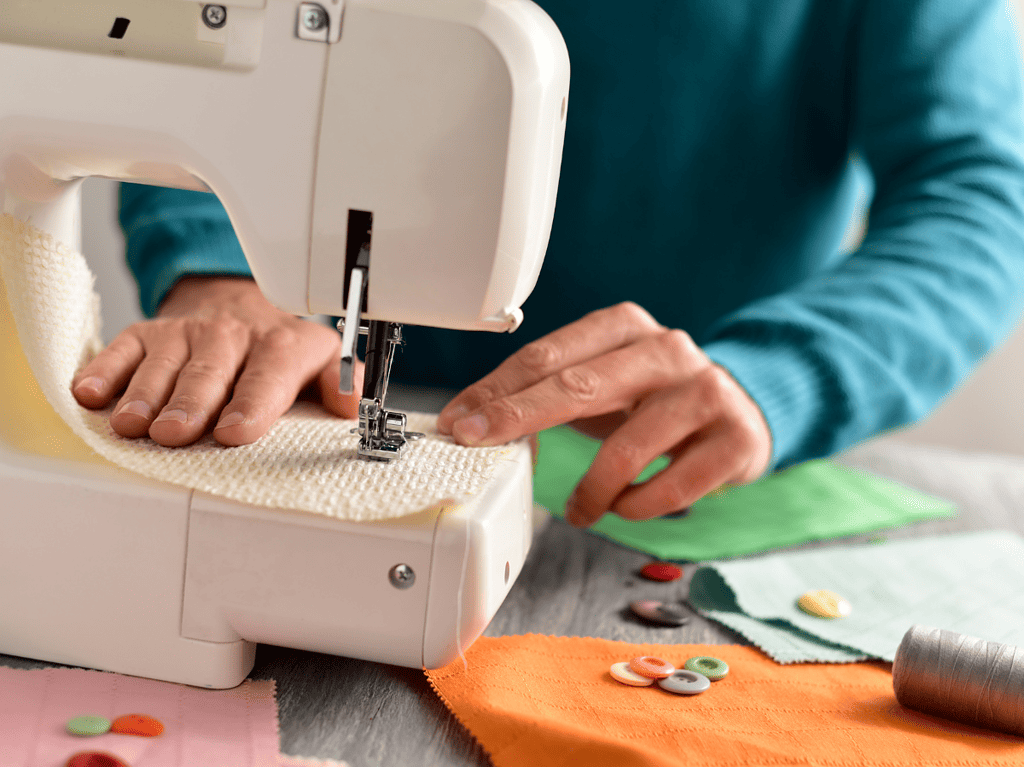
Typically, sewing machine oil is colorless, odorless, and possesses a light viscosity. There are generally three types of oil used for sewing machines: natural oil derived from plants, mineral oil, and synthetic oil. Since a sewing machine is essentially another type of fine mechanism, any oil intended for such mechanisms should be suitable.
However, it is essential to consider the specific benefits and drawbacks associated with each type of oil when selecting the most appropriate one for your machine.
Using just any type of oil on your sewing machine is not recommended. The manufacturer often provides recommendations regarding the viscosity of the oil, making it advisable to adhere to the recommended sewing machine oil for optimal performance and maintenance.
Main Types of Sewing Machine Oil
I appreciate the reference to the article on synthetic oil, titled “Synthetic Oil Explained | Synthetic vs. Conventional Oil | Machinery Lubrication.” In summary, synthetic oil is a type of oil manufactured for a specific purpose. It exhibits enhanced adherence to metal surfaces, leading to improved lubrication.
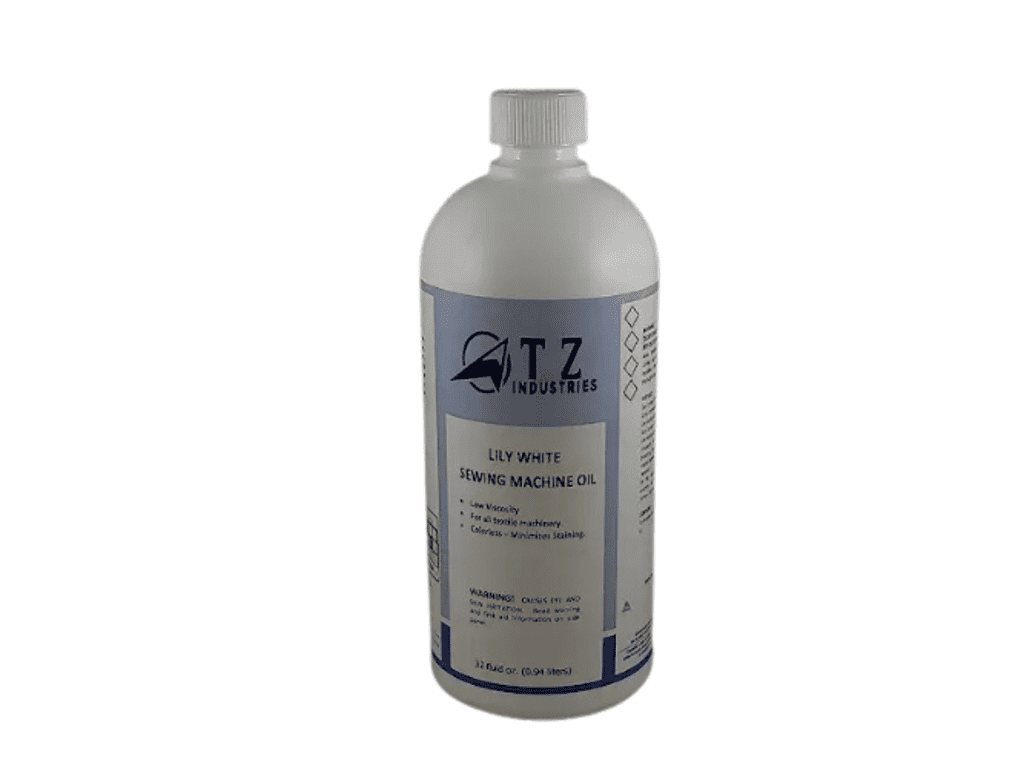
Mineral oil can also be effectively utilized for sewing machines. It’s worth noting that synthetic oils were not readily available on the market until relatively recently, specifically in the 1970s. Over the past 25 years, they have gained widespread usage. Nevertheless, there are still excellent mineral oils derived from petroleum products that remain available and suitable for sewing machine lubrication.
When considering sewing machines, there are notable distinctions between mineral oil and synthetic oil. Mineral oil is derived from crude oil, whereas synthetic oil is chemically formulated in a laboratory setting. It’s important to note that mineral oil is a non-renewable resource, whereas synthetic oil can be produced from sustainable materials.
In terms of viscosity, synthetic oil typically has a higher viscosity compared to mineral oil. This higher viscosity means that synthetic oil resists flowing more readily, which can be advantageous for sewing machines as it helps to maintain the oil in the necessary areas and prevents leakage.
However, it is crucial to ensure that sewing machine oil does not form deposits in the machine parts, so the viscosity of the oil should not be excessively high. Striking the right balance is important to ensure optimal lubrication without compromising the machine’s performance.
Moreover, synthetic oils tend to exhibit higher heat resistance compared to mineral oils, rendering them more suitable for sewing machines that generate significant heat during operation. Determining the ideal oil for a sewing machine will ultimately rely on the particular machine and its requirements.
If you find yourself unsure about the appropriate oil to use in your sewing machine, it is advisable to refer to the machine’s manual or seek guidance from a sewing machine technician. These resources will assist you in selecting the correct oil that aligns with the specifications of your specific machine, ensuring optimal lubrication and performance.
Best Sewing Machine Oil
First and foremost, it is advisable to utilize the oil that comes with your sewing machine. In the case of your Juki MO-2000 serger, the manufacturer thoughtfully included a small bottle of oil.
Although the exact size of the bottle is unknown, it appears to be around 1 fluid ounce (30ml) in capacity, which is relatively small. Over the course of three years, you have only consumed approximately 1/4th of this oil, indicating that the provided amount will last a significant duration.
To address any potential concerns, it is important to note that the specific type of oil included by the manufacturer is unspecified, and no information regarding its composition has been provided.
If you find yourself without any oil that was included with your sewing machine, a convenient option is to check online platforms such as Amazon. They often offer a variety of sewing machine oils that are compatible with different models.
By searching for sewing machine oil on Amazon, you can explore various brands and types of oil available for purchase, ensuring that you can acquire the appropriate oil for your specific sewing machine needs. Remember to consider customer reviews and product descriptions to make an informed decision.
Let’s review the different types of oils most sewers buy. You are looking for an all purpose sewing machine oil that is a good choice for your commercial sewing machine.
Liberty Oil
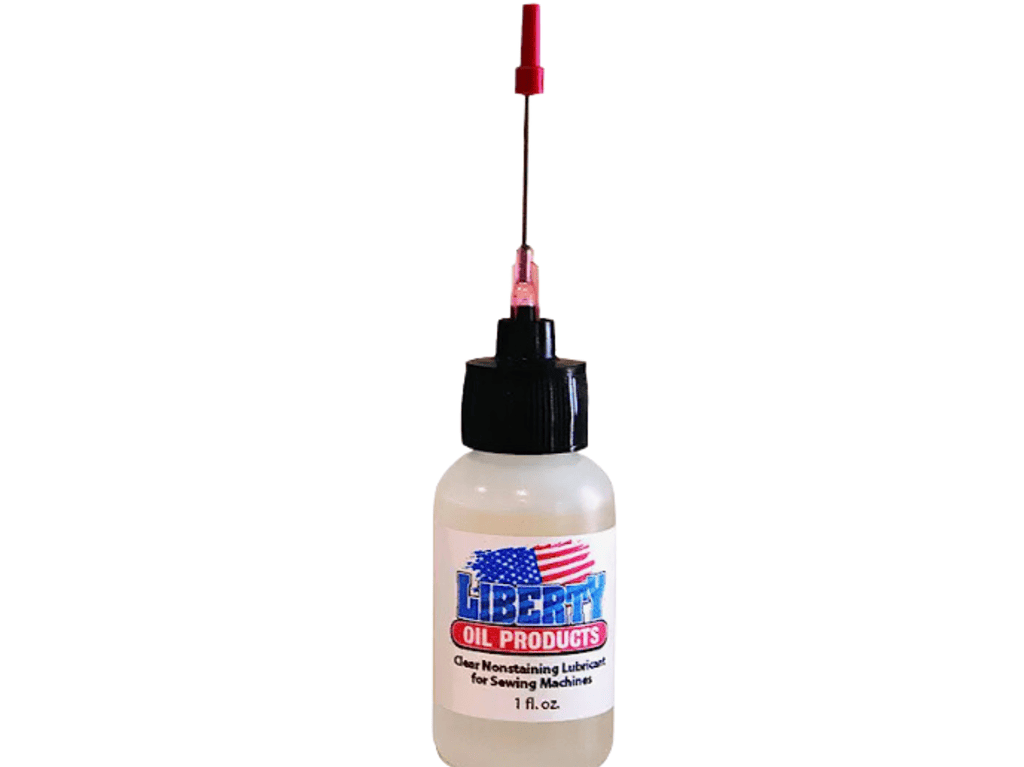
One highly rated sewing machine oil product available is Liberty Oil, specifically designed for lubricating all moving parts of your sewing machine. It is offered in a 1oz bottle equipped with a stainless steel needle tip dispenser. The oil itself is of premium quality, being 100% clear and non-staining mineral oil.
The bottle is made from soft plastic, making it easy to squeeze for controlled application. The inclusion of a long stainless steel needle tip applicator ensures precise and mess-free oiling.
Additionally, the bottle features a lock cap to prevent leaks, although it is important to keep the bottle upright to avoid any potential leakage.
This Liberty Oil product receives positive feedback from users and can be a suitable option to consider for your sewing machine lubrication needs.
Personally, I have a preference for synthetic oil. However, in my recent oil purchase, I opted for Liberty oil due to its convenient applicator.
The included thin and long applicator proves to be highly useful for precise oiling. Additionally, once the oil is depleted, the bottle itself can be reused, which aligns with my intention to minimize waste and maximize sustainability.
In addition to Liberty oil, there are several other sewing machine oils that receive excellent reviews. One such oil is the SINGER 2131E All Purpose Machine Oil.
SINGER Sewing Machine Oil
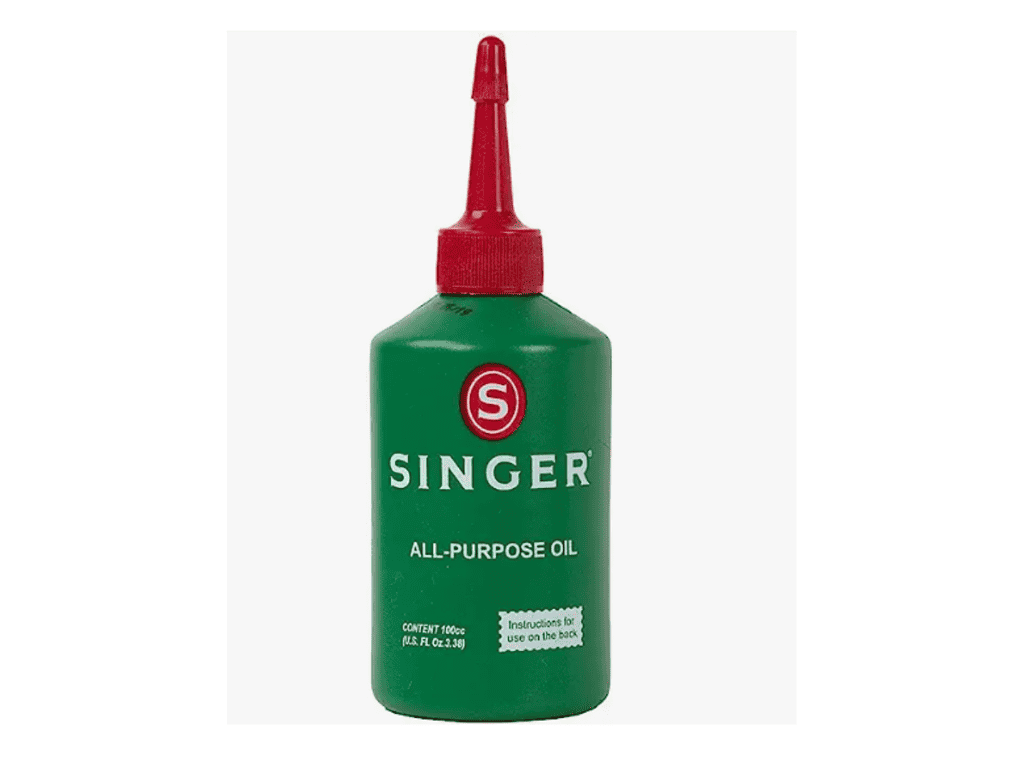
SINGER is a renowned brand in the sewing machine industry, known for its high-quality products. The all purpose machine oil from SINGER is available in a 4oz bottle. It is specifically designed to meet the expectations of sewing machine owners, offering reliable lubrication.
The bottle of SINGER all purpose oil is equipped with an applicator that can pivot from the down to the up position for easy dispensing. Although the tip of the applicator is blunt, users report that it does not leak even if the bottle is stored on its side in a toolbox. This feature ensures that the oil remains contained and avoids any messy spills.
Considering its positive reviews and the reputable brand name, the SINGER 2131E All Purpose Machine Oil can be a reliable choice for lubricating your sewing machine.
Lily White Sewing Machine Oil

The sewing machine oil provided is a 4oz bottle, offering several advantageous features. Firstly, it boasts a non-toxic composition, ensuring safety during use. Additionally, its high-quality formulation guarantees optimal performance.
Moreover, this Lily White oil is non-staining and non-gumming, preserving the pristine condition of your sewing machine. With its flexible spout, it enables effortless access to all areas within the machine.
For added convenience, the oil bottle includes a small cap that securely attaches to the spout, effectively preventing any accidental spills.
Super Lube 51004 Synthetic Oil
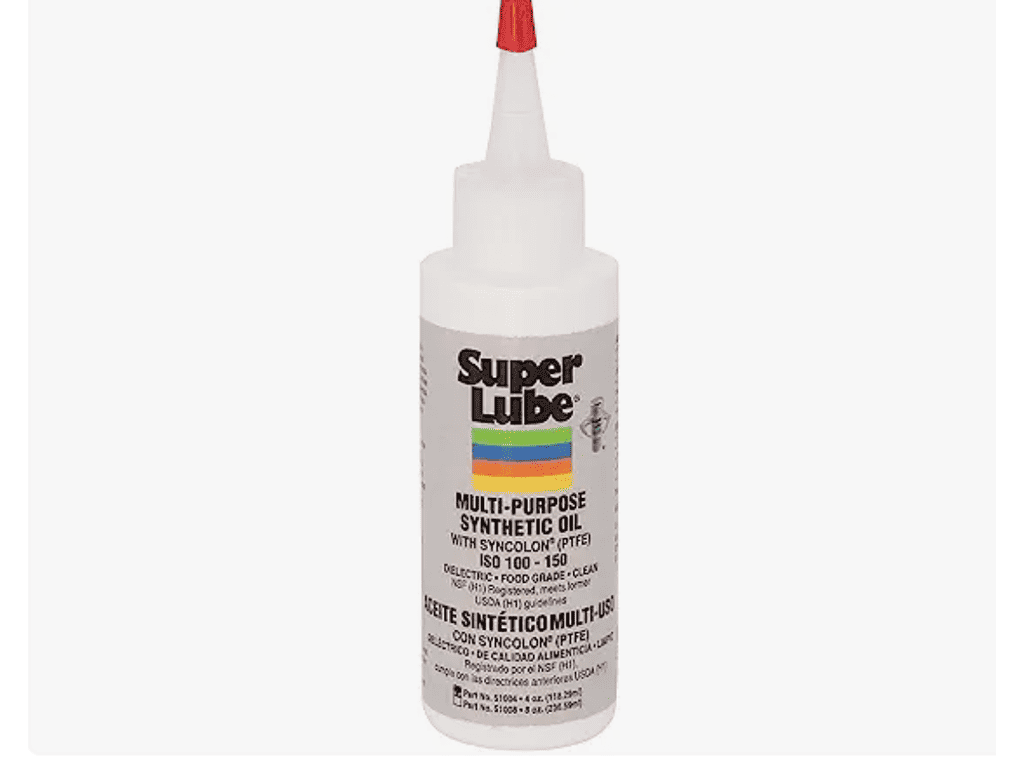
The 4oz (115ml) bottle of sewing machine oil provides an ample supply that will last you for an extended period. It is advisable not to purchase larger sizes unless there is a need for it, such as for larger appliances or other devices that your husband may use.
Furthermore, this versatile sewing machine oil can effectively maintain and lubricate various other home appliances including vacuum cleaners.
Typically, sewing machine oil is transparent and free from any noticeable scent which is perfect for tight spaces. If you observe a change in color or detect an odor in the oil, it is recommended to discard it properly and acquire a fresh bottle as a replacement.
Where to buy sewing machine oil?
My favorite place to buy the best oil for sewing machine is of course Amazon. I have also seen it at retails stores like Walmart, Michaels and sometimes at Joann’s or Hobby Lobby. You don’t need much oil unless you are sewing day and night for a long time.
How to Oil Your Sewing Machine
Oiling a sewing machine varies depending on the specific make and model, as each machine has its own distinct settings and requirements. To illustrate, let’s consider the “Maintenance” section of the Juki MO-2000 serger as an example.
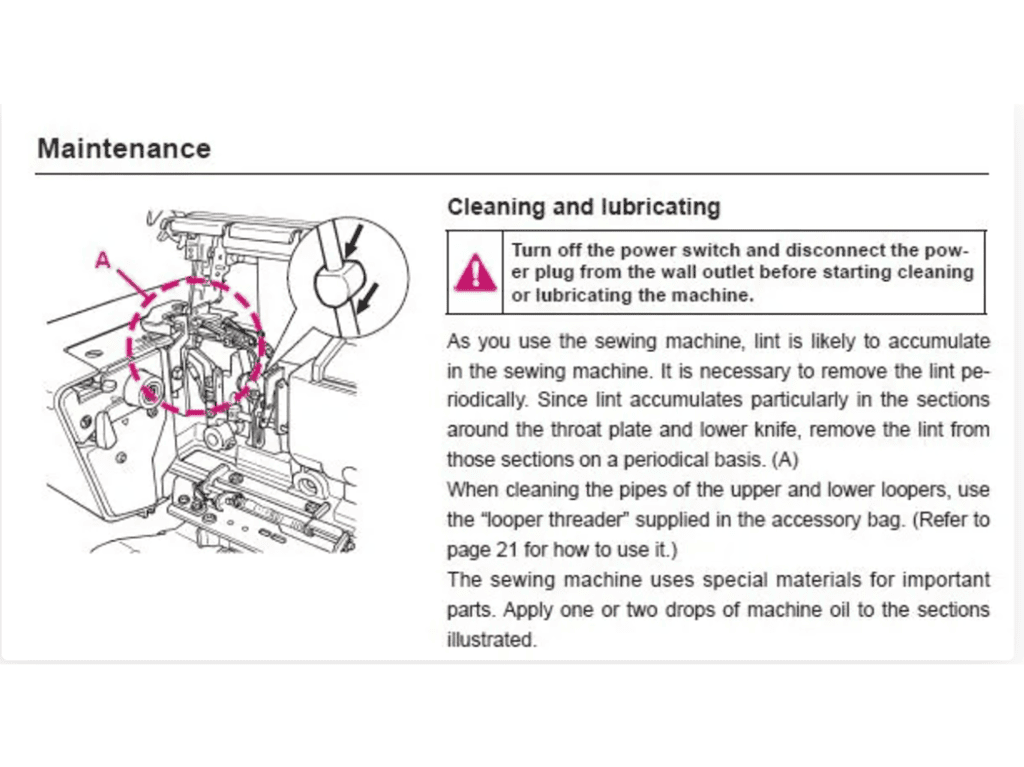
Your machine’s manual should contain a similar section that you should carefully read and follow. The manual serves as the ultimate authority on the matter, as it provides the manufacturer’s specified guidelines for oiling and maintenance.
Therefore, the correct answer to the question of how to oil your machine is solely determined by the instructions outlined in the manufacturer’s manual.
Your sewing machine’s owner’s manual is an essential resource that provides specific instructions on whether, when, and where to oil your machine. Different sewing machine brands have varying oiling requirements, necessitating oil application in distinct areas.
In the event that you don’t have a physical copy of the manual, conducting an online search using your brand and model number can be helpful. Many manufacturers make manuals available for download on their websites.
For instance, I was able to find a free copy of the manual for my intriguing Kenmore machine on a particular website. Additionally, manualsonline.com is a platform where you can purchase sewing machine manuals if needed.
General guidelines for oiling your sewing machine
When it comes to oiling a sewing machine, it is important to adhere to several general guidelines:
- Avoid oiling plastic parts, as they typically do not require lubrication.
- Prior to oiling, ensure that your sewing machine is unplugged to prevent any accidents.
- Utilize only high-quality sewing machine oil specifically designed for this purpose.
- Take precautions to prevent contact with your eyes and skin. If oil comes into contact with your skin or eyes, promptly wash it off to avoid irritation.
- In the event of accidental ingestion, seek immediate medical attention by going to an emergency room.
- Store the oil in a secure location away from the reach of children.
- Dispose of used oil in accordance with relevant legislation and proper waste management practices.
Before proceeding with oiling your sewing machine, it is crucial to begin by cleaning it thoroughly. It is essential to ensure that the machine is free from any visible debris or dirt.
To effectively clean accumulated lint from your sewing machine, it is recommended to remove the needle, thread, and needle plate. By doing so, you can gain unobstructed access to all areas that require cleaning.
This allows you to thoroughly remove any lint or debris that may have built up, ensuring optimal performance and preventing potential issues during the oiling process.
In general, when oiling your sewing machine, it is advisable to apply a small amount of oil (one or two drops) to the specific metal parts indicated in your manual. Afterward, manually rotate the wheel for approximately one to two minutes to evenly distribute the oil. It is important to wipe off any excess oil before resuming sewing, as it may cause issues with the fabric.
To ensure that no oil drips from the needle bar onto your fabric, it is recommended to sew on a piece of scrap material initially. This test run allows you to verify that the machine is operating smoothly without any unwanted oil residue that could potentially stain or affect your fabric.
When oiling a sewing machine, it is crucial to adhere to an important rule: avoid applying excessive oil, as this can result in oil stains on your fabric. Over-oiling can also attract dust and create additional issues. It is essential to ensure that oil does not drip from the machine during or after the oiling process.
If you notice oil pooling in one specific area, it indicates an excess amount of oil. In such cases, it is necessary to remove the excess oil promptly. To do this, use a soft cloth or napkin and gently place it over the pooled oil.
Instead of wiping, allow the cloth to absorb the excess oil naturally. This method prevents further spreading of the oil and helps maintain a clean and functional sewing machine.
It is generally true that older sewing machines require more frequent oiling compared to newer computerized models on the market today.
Each sewing machine, regardless of age, may have different oiling requirements. For instance, in the case of my Janome 6600, there are no user-serviceable points that require oiling.
Conversely, the Juki MO 2000 serger may have only one specific point that needs oiling, as indicated in the provided image.
However, when it comes to older machines, such as a Kenmore from the 1980s to 1990s or a White machine from the late 1990s, their manuals often illustrate multiple oiling points. These machines may have various areas that require lubrication to ensure smooth operation.
It is essential to consult the respective manuals for accurate instructions on where to oil these older machines, as their oiling points may differ from model to model.
Where to oil a sewing machine
To determine the specific oiling points for your sewing machine, it is important to refer to the owner’s manual. The manual will provide detailed instructions from the manufacturer regarding where and how to apply oil to your machine.
Different sewing machine models have unique oiling requirements, so it is crucial to follow the specific guidelines provided.
In general, the moving metal parts of a sewing machine typically require oiling and lubrication. These parts may include the shaft where the needle moves up and down, the feed dogs, and the metal bobbin case.

It is essential to pay extra attention to metal parts that come into contact with other metal surfaces, as inadequate lubrication can lead to wear and tear over time. Conversely, plastic parts do not require oiling and should be excluded from the oiling process.
How often should I oil my sewing machine?
As previously mentioned, the best course of action is to consult the owner’s manual for specific guidelines on oiling your sewing machine. The manual will provide detailed information on the recommended oiling frequency based on factors such as machine usage and manufacturer’s instructions.
In general, some manuals suggest oiling every three months or more, especially for machines subjected to heavy use.
However, the frequency ultimately depends on the individual usage patterns. If you use your machine extensively on a daily basis, it may require more frequent oiling, possibly once a week.
It is important to note that you should only oil your machine if it is necessary and if the manual specifies oiling instructions.
For machines like your Juki serger, where the manufacturer does not provide a specific oiling schedule, visual inspection becomes crucial.
If you notice dryness in the mechanism, you can oil it accordingly. In your case, you mentioned oiling it no more than two or three times since acquiring it.
Additionally, there are certain situations when you should consider oiling your sewing machine, if instructed to do so in the manual.
These include instances of squeaks and unusual noises, prolonged machine inactivity, unexpected heavy use, difficulties in manual movement, or before placing the machine in storage for an extended period.
In summary, always refer to your manual for precise instructions on oiling frequency and follow the manufacturer’s recommendations.
Can I use WD 40 to oil my sewing machine?
Absolutely not! Please refrain from attempting that. WD40 does not offer long-term lubrication properties. Under no circumstances should you employ WD40 as a lubricant, unless of course you have a deep desire to replace your sewing machine.
Using WD40 will harm your machine if you make the ill-advised decision to employ it.
Can I use cooking oil to oil my sewing machine?
It’s never a good idea to use cooking oil on your sewing machine. It’s definitely NOT the best oil for sewing machine. Leave your olive oil in the kitchen for your favorite dishes.
Can I use Baby Oil to Oil my Sewing Machine?
I am going to sound like a broken record but no. Your user manual will tell the kind of oil to use, and it is most definitely not baby oil.
Regular maintenance of your sewing machine may include using the best oil for sewing machine. You want to use the best options for your sewing machine to have a well-oiled machine.
An older sewing machine will require more oiling while modern sewing machines have more plastic parts and require less oil but both still need great oil to keep you sewing for years to come.
Free Monthly Sewing Class
Each month, we also have an online sewing class. Every 3rd Saturday and Sunday, we have a project not found in our library or on YouTube.
Each class is unique and available for 24 hours. We send out the links via email and in our Facebook group. See the upcoming class by going here. VIPs get the PDF of instructions and lifetime access to the free tutorial.
Fabric Giveaway
Enter our monthly fabric giveaway. Simply complete the tasks daily and you will be entered into the drawing. Winner will be randomly drawn on the first day of the month and notified via email
